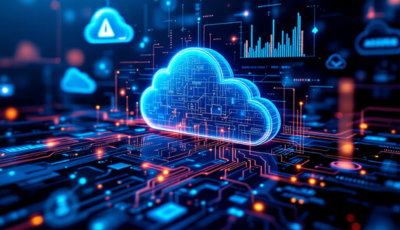What Are Indoor Location Services?
Indoor location services are technology-based systems that determine the position of people or objects within enclosed environments. Unlike GPS, which relies on satellite signals and struggles indoors, these systems leverage Wi-Fi, Bluetooth Low Energy (BLE), ultra-wideband (UWB), RFID, and IoT sensors to deliver reliable location data.
Core capabilities include:
- Real-Time Tracking: Continuous updates on the movement of tracked assets or individuals.
- Indoor Navigation: Turn-by-turn guidance inside buildings, ideal for large facilities.
- Geofencing: Automatic alerts or actions triggered when a tracked entity enters or leaves a predefined zone.
- Analytics & Insights: Data on movement patterns, dwell times, and space utilization.
- Safety Applications: Emergency personnel tracking, evacuation route monitoring, and hazard alerts.
Why Choose Indoor Location Services?
Core Problems Indoor Location Services Solve
- Wasted Time Searching for Assets: Staff no longer waste hours locating misplaced equipment or inventory.
- Inefficient Resource Allocation: Identify bottlenecks in workflows and redistribute resources effectively.
- Limited Safety Oversight: Track the location of employees in hazardous environments for better safety compliance.
- Poor Customer Wayfinding: Enhance visitor experiences with accurate indoor navigation.
Who Should Consider Indoor Location Services?
- Healthcare: For patient tracking, medical equipment location, and emergency response coordination.
- Retail: To guide customers to products, analyze store traffic, and enable personalized marketing.
- Logistics: For real-time inventory location and movement tracking in warehouses.
- Manufacturing: To track production equipment, raw materials, and worker movement for efficiency.
- Corporate Offices: To manage meeting room usage, employee location, and visitor navigation.
Key Features of Indoor Location Services
Modern indoor location systems combine multiple technologies for maximum flexibility and accuracy:
- Technology Agnostic: Supports Wi-Fi, BLE, RFID, UWB, or hybrid solutions for tailored deployments.
- Scalable: Expand from one facility to hundreds without replacing core infrastructure.
- Integration Ready: Works with ERP, CRM, and facilities management platforms.
- Customizable Geofences: Define security zones, restricted areas, and customer engagement points.
- Advanced Analytics: Convert movement data into actionable intelligence.
Implementation Insights
A successful indoor location service deployment involves more than just installing hardware. ITBroker.com follows a structured approach:
- Assessment & Goal Setting: Define what you need to track, why, and the outcomes you expect.
- Technology Selection: Choose the best-fit positioning technology for your accuracy, cost, and environment needs.
- Infrastructure Review: Ensure your network can handle the additional load and coverage.
- Pilot Deployment: Test on a smaller scale to fine-tune performance.
- Integration & Training: Ensure seamless data integration and staff adoption.
- Ongoing Optimization: Continuously monitor performance and adjust as needed.
Indoor Location Services vs. GPS Tracking
Common Challenges and Misconceptions
- “It’s Only for Big Enterprises.” SMBs can also gain significant ROI from improved asset management and workflow efficiency.
- Accuracy Myths: Not all technologies offer the same precision—choose based on your actual use case.
- Budget Concerns: Phased rollouts and modular solutions make adoption cost-effective.
- Privacy Worries: Systems can be fully compliant with GDPR, HIPAA, and other privacy regulations.
How to Choose the Right Indoor Location Partner
When evaluating a provider, consider:
- Accuracy & Technology Match for your specific needs.
- Integration Capabilities with your existing IT systems.
- Scalability for future expansion.
- Support & Maintenance availability.
- Analytics Depth for better decision-making.
Indoor Location Services Pricing Models
How ITBroker.com Finds the Right Provider for You
Our process ensures maximum ROI:
- Operational Analysis: Identify critical use cases.
- Technology Matching: Recommend the most suitable hardware/software.
- Provider Shortlisting: Present only proven, reputable vendors.
- ROI Projections: Demonstrate value before commitment.
- End-to-End Support: From deployment to long-term optimization.
FAQs About Indoor Location Services
Can it work without the internet?
Yes—systems can operate locally, syncing to the cloud when connectivity returns.
What industries use it most?
Healthcare, retail, manufacturing, logistics, and corporate facilities.
How accurate is it?
Depends on the technology—UWB offers centimeter-level accuracy, BLE offers meter-level accuracy.
Is it secure?
Yes—data can be encrypted and stored according to compliance requirements.







.png)
.png)
.png)
.jpg)
.jpg)
.jpg)


